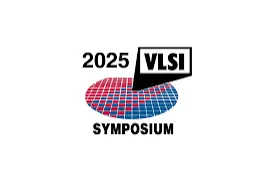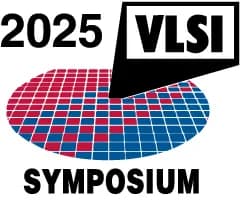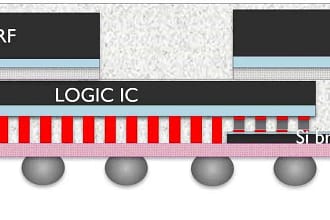The theme of the event is: “Cultivating the VLSI Garden: From Seeds of Innovation to Thriving Growth.”
Among the subjects of the plenary sessions will be:
“Driving Innovation in DRAM Technology: Towards a Sustainable Future” by Seon-Young Cha, CTO, Head of R&D, SK hynix.
’Since the introduction of the 6F2 Buried Gate Scheme in the early 2010s, DRAM technology has evolved based on platforms that can be continuously scaled down to 10nm technology,’ writes Cha, ‘beyond 10nm, however, the evolution of DRAM technology has reached an inflection point where it is difficult to build scalable platforms using existing cell schemes and meet the high-performance demands of the AI era. In response to the inflection point, this presentation will review how cell schemes will change to ensure a scalable platform and describe how DRAM technology can innovate in a way that delivers new values in the era of AI.’
”Innovate VLSI for AI growth” by John Chen, Corporate VP of Technology and Foundry Management, Nvidi
‘AI is built on VLSI by the amazing Moore’s law which has ended, but we need VLSI more than ever in the AI era. So, what’s next?’ Adks Chen, ‘it’s innovation, innovate from materials, devices, modules to systems. This speech presents the progress of VLSI from the past decade and highlights the most complicated VLSI chip today. Innovation is easier said than done. What are the criteria and barriers for success and what leadership is needed to cultivate innovation? The speaker’s career has lived through the relationship between VLSI and AI, their similarity, synergism and reinforcement that accelerates their thriving growth. With AI taking away routine and complicated tasks, it raises the question of what young people should be doing. While AI is becoming such a powerful tool, the leaders and engineers must help to grow ethics and morality for mankind.’
Enabling Generative AI: Innovations and Challenges in Semiconductor DesignTechnologies” by by Kou- Hung Lawrence Loh, Corporate Senior VP MediaTek Inc.
‘In recent years, Generative AI has profoundly transformed a wave of revolution across all fields, from our daily life to advanced science exploration,” writes Loh, ‘this transformation has triggered a  unparalleled increase increase in the demand for computing. connectivity/communication, and memory/data storage across data centers, infrastructures, and edge devices. The uptick has catalyzed booming industrial investments spanning a spectrum of “hard tech” based on advanced materials, packaging, and semiconductor process technologies, such as hardware accelerators, wired and wireless connectivity/communication, and heterogeneous integration from chip to discrete levels, all supported by substantial research and development investments to embrace the AI era. In this presentation, we will explore the frontier of cutting-edge technologies and tackle the challenges associated with developing high-performance computing and high-speed connectivity solutions under considerations to accomplish demanding energy efficiencies. Additionally, we will address the mounting demands posed by power distribution and other engineering complexities. Our focus will highlight the pivotal role of innovation and investments to ensure the long-term sustainability in the forthcoming decades.’
unparalleled increase increase in the demand for computing. connectivity/communication, and memory/data storage across data centers, infrastructures, and edge devices. The uptick has catalyzed booming industrial investments spanning a spectrum of “hard tech” based on advanced materials, packaging, and semiconductor process technologies, such as hardware accelerators, wired and wireless connectivity/communication, and heterogeneous integration from chip to discrete levels, all supported by substantial research and development investments to embrace the AI era. In this presentation, we will explore the frontier of cutting-edge technologies and tackle the challenges associated with developing high-performance computing and high-speed connectivity solutions under considerations to accomplish demanding energy efficiencies. Additionally, we will address the mounting demands posed by power distribution and other engineering complexities. Our focus will highlight the pivotal role of innovation and investments to ensure the long-term sustainability in the forthcoming decades.’
“The Evolution of Edge AI: Contextual Awareness and Generative Intelligence” by Alessandro Cremonesi, Exec.VP, Chief Innovation Officer, STMicroelectronics
‘We are witnessing a rapid transition from traditional AI to generative AI in the cloud,’ writes Cremonesi, ‘this is driving increased demands in the high-performance computing domain. However, to support this shift sustainably, edge AI technologies are advancing, including hardware accelerators (NPU) in microcontrollers and disruptive technologies like in-memory and neuromorphic computing. These developments, along with optimized large language models, enable more efficient AI and generative AI solutions for edge products. This keynote will explore the transformative potential of contextual awareness in AI for edge devices. Advanced sensing technologies and generative AI will revolutionize interactions with the world, allowing AI to adapt based on localized experiences and migrate seamlessly across devices. These innovations will drive the future of technology, making it more cognitive, generative, and interactive, ultimately leading to smarter, more connected and more sustainable solutions.’
In addition, the Symposium programme integrates technology & circuit topics through three Joint Focus sessions: 1) Design- Technology Co-Optimization (DTCO) and Design Enablement, 2) AL and ML Hardware, 3)3D Integration and Photonics. In addition, there are two Technology focus sessions on: 1) Memories for AI Applications, and 2) Advanced 3D Stacked Transistors.
Two full-day short courses will be featured:
- Short Course 1: “Key VLSI Technologies in the AI Era” highlights key technologies for advanced logic, memory and heterogeneous integration. The course will cover advanced CMOS technologies, novel materials, advanced process technologies, heterogeneous / 3D integration, DRAM, emerging memories, DTCO / STCO, and 3D integrated image sensors.
- Short Course 2: “Circuits and Systems for AI and Computing” highlights the latest advances in circuits and systems driving the evolution of AI and computing. The course will cover the latest trends in AI and computing, scalable computing, efficient AI architectures, and the technologies behind them such as EDA, chip-to-chip communications, silicon photonics, high-speed memory, storage and power supply circuits.
Evening panel discussions are on:
- “What can semiconductor industry do for greener society?
This panel discussion explores the crucial role of the semiconductor industry in building a sustainable future. As the world grapples with climate change and environmental challenges, semiconductors are at the forefront of technological advancements driving positive change. Key discussion topics include energy-efficient technologies enabled by advanced VLSI and sustainable manufacturing. The panel, featuring six experts in this field, will be moderated by Bala Haran from AMAT.
- “Practical Circuits & Technology Training: Academia vs. Industry – Where Do We Learn the Most?”
Traditional education may not fully prepare IC designers for real-world challenges. However, obtaining a sound theoretical basis and strong understanding of basic principles of electrical engineering and systems design is learned at an academic institution that also imparts critical thinking skills. So, is learning best done on the job or is there something that on-the-job training just doesn’t teach you? Audience participation is encouraged. A scorecard will track academia vs. industry, with final scores revealed at the event’s end.




